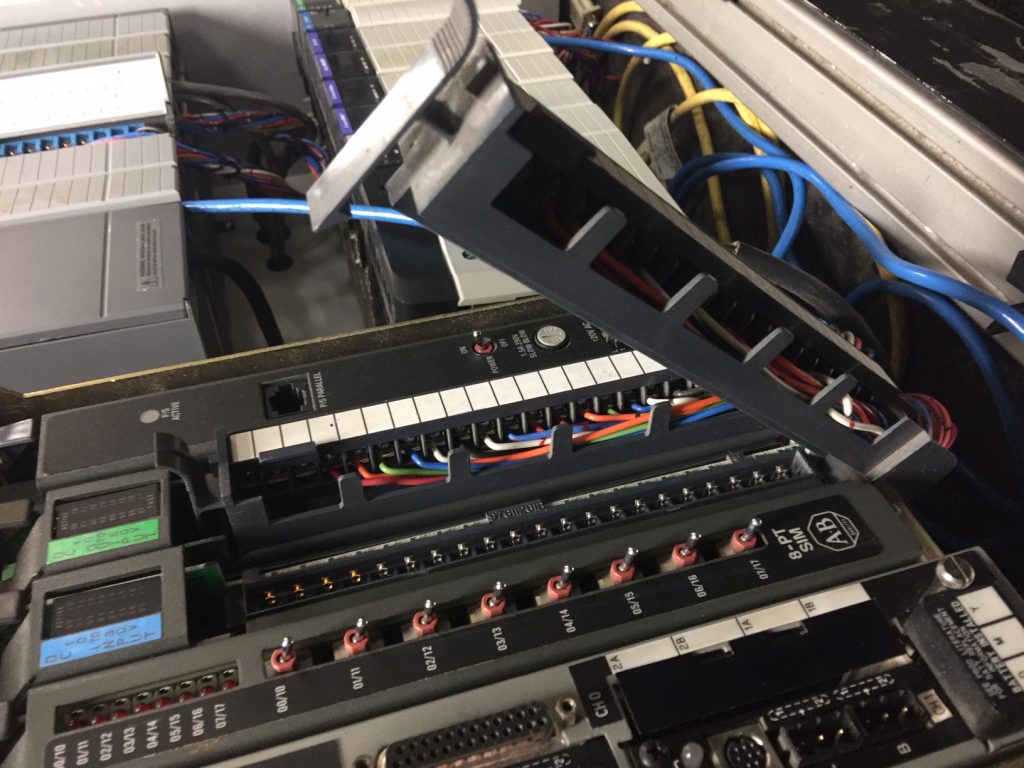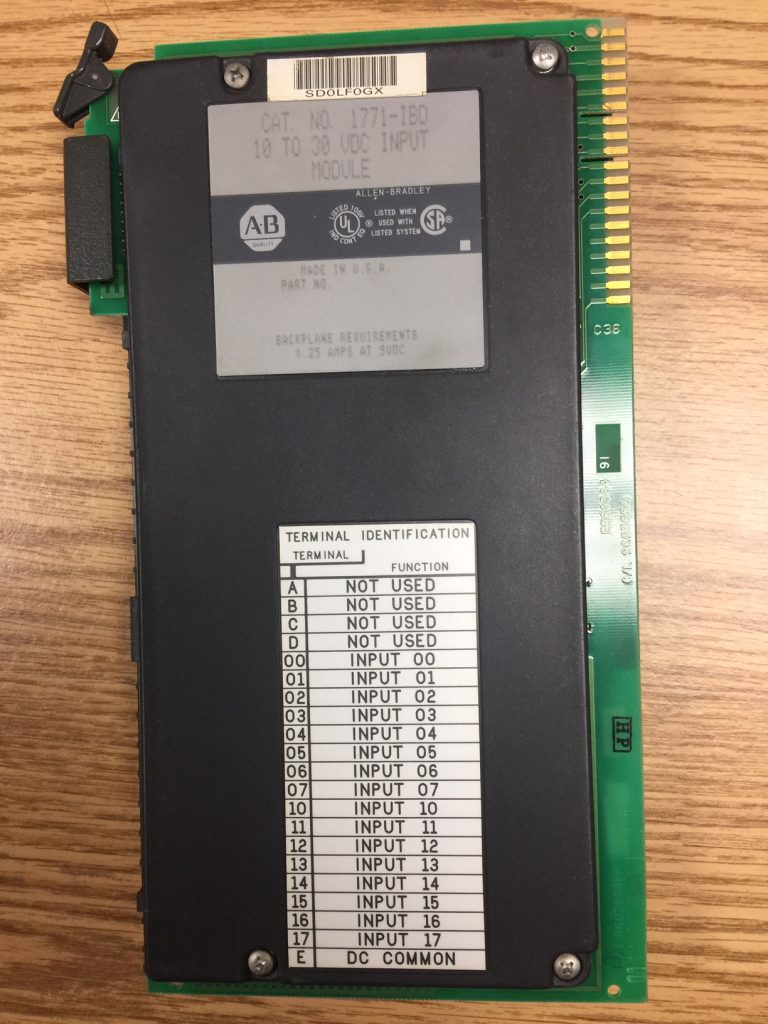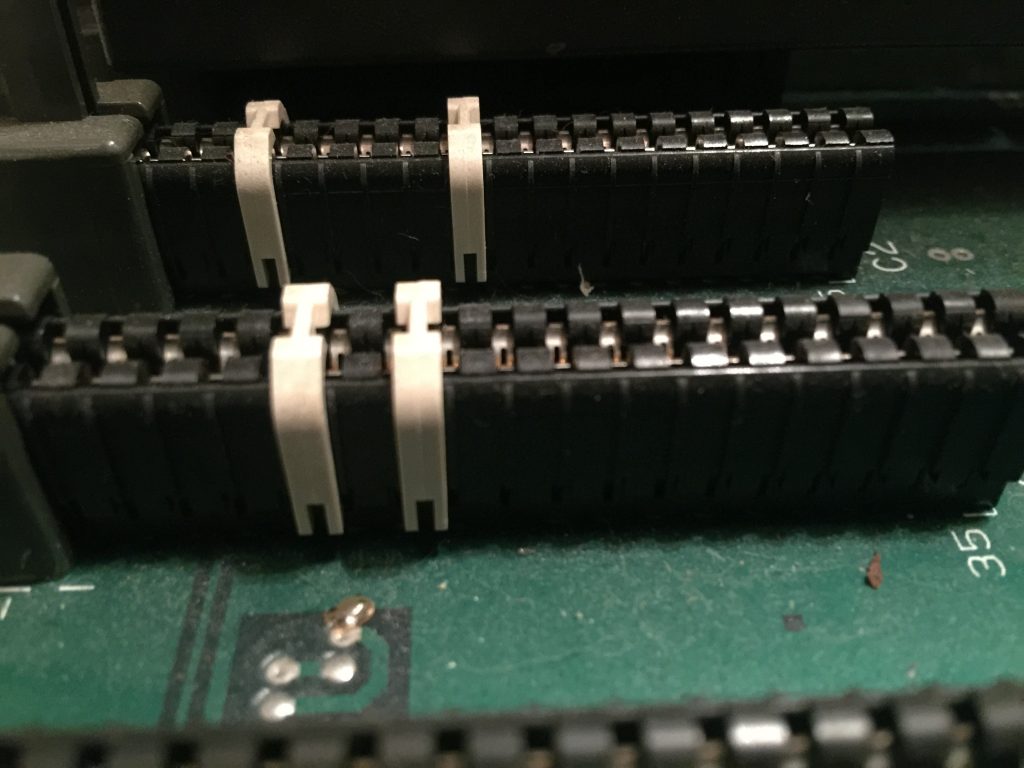Introduction to PLC-5 Input Modules
The PLC-5 Input modules read the status of equipment. Examples of field devices that act as real inputs include limit switches, proximity switches, aux. contacts, and push buttons.
Input modules are simply voltage testers. When a voltage is detected at a particular point, the status light will energize.
Wiring the Module
The wiring arm ensures the module is easy to wire up and replace. Be sure to consult the installation manual for your particular input module. This will tell you which wiring arm you need to purchase.
Attach the wiring arm to the chassis with a bit of a twisting motion.

The first thing to remember is that all the I/O points are in Octal. With this in mind, a 16 point input module is labeled from 0 to 7, and 10 to 17.
The wiring diagram is usually found on the side of the module, however, it’s a good idea to consult the installation manual as well. In this case, the top four terminals are unused. The bottom terminal is common, and the field devices are connected to the other terminals.

Status Indicators
The status indicators are important for troubleshooting. With this in mind, a status indicator tells us when there is voltage on a particular input point. If the status indicator is ON, we have a voltage. However, if there is no status indicator, no voltage is getting through the field device to the input terminal.

Fault State Jumper
The Fault state jumper sets how the inputs will react if the module detects a fault. There are two settings for this jumper: RESET, and LAST STATE.
Keying the Module
Install hardware keys on the backplane according to the installation manual. The PLC-5 has been around for many years. Because of this, many of the keys have become brittle on existing chassis, and fall to the bottom of the cabinet. The keys line up with the slots on the back side of the module. If there is a key on the backplane where there is no slot on the module, then the module will not be ‘easily’ inserted into a slot.

For more information, visit the PLC-5 Category Page! I’m always building new documentation.
— Ricky Bryce
